Here’s our journey and thoughts on elephant watching in Thailand. We will develop on our experiences at the Kui Buri National Park and the Wildlife Friends Foundation Thailand.
As we love to discover the local fauna and the fascinating animals on our planet, we dreamed of meeting our first elephants on our way to Thailand. Unfortunately, nowadays, there are more captive than wild elephants in Thailand. In addition to the massacres of entire families for poachers to capture babies for domestication, elephants are suffering from the destruction of their natural habitat. It is clear we were not going to cross them by chance while walking around. Moreover, since arriving in Asia we witnessed mistreatment of wild and domestic animals and were very concerned about this.
So these are the two alternatives we have chosen to observe Asian elephants, hoping it didn’t have any negative repercussions we were not aware of.
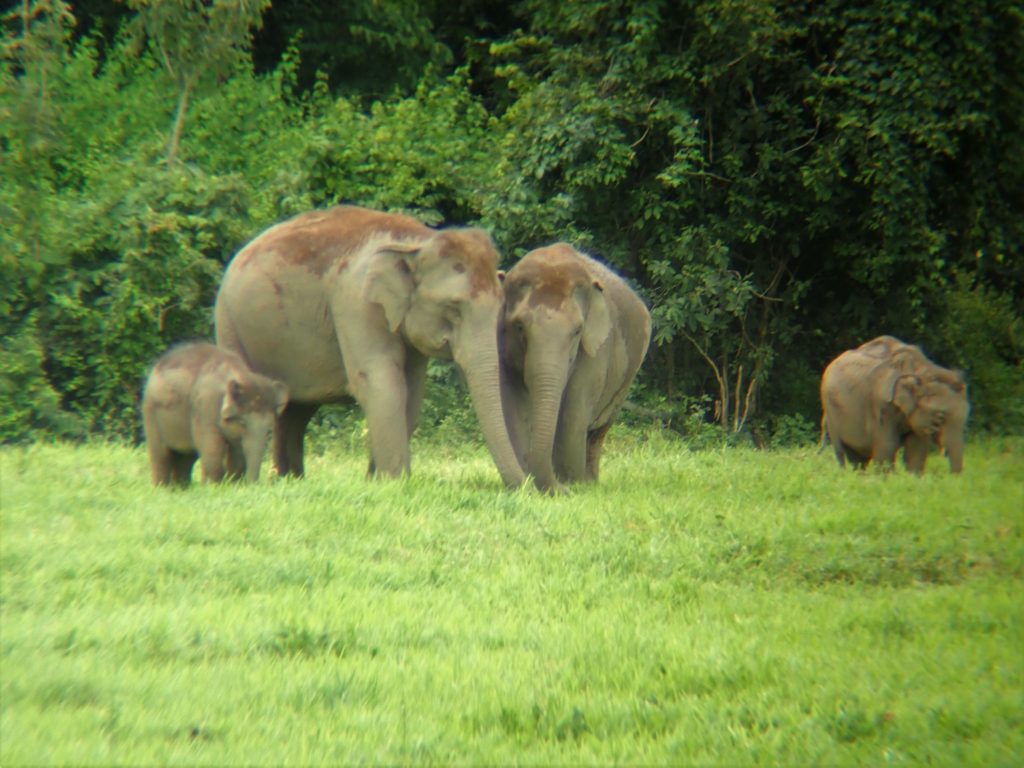
The Kui Buri National Park : a place to observe elephants in their natural habitat
The Kui Buri National Park is a territory separating Thailand and Myanmar (formerly known as Burma). It is one of the last places to observe wild elephants in their natural environment, however it is not very touristy. The lack of tourism might be a good thing. Indeed, together with the work of the local population, it contribute to making it one of the best preserved parks in the country.
We combined the park visit, which is only accessible in the afternoon from 2 p.m. to 6 p.m., with the Khao Sam Roi Yot park in the morning. We started this day trip from Hua Hin.
Our taxi dropped us off at the Visitor Center where we were able to book the mandatory transport for the visit. We think it is a good thing visitors can’t walk around on their own and risk disturbing wild animals. In 2019 the prices were 200 baht per person for the park entrance and 850 baht for the vehicle (which has a capacity of 6 passengers). For economic and ecological reasons we arranged to share our vehicle with other travelers. The ranger then took us to the park where we had the chance to observe about twenty elephants including a family of thirteen individuals of all ages. Elephants are not the only park inhabitants and we also saw the impressive gaurs (also called wild water buffalo).
This is an experience we recommend if you want to see elephants in their natural habitat (and it 99% guaranteed to see them). The park is beautiful and the visit pleasant. Visiting national parks allows you to participate in their protection. It is important knowing that wild elephants in Thailand suffer mostly from their natural habitat disappearing.
The Wildlife Friends Foundation Thailand : a place to get closer to rescued elephants and other animals
After seeing elephants in their natural habitat, we wanted to learn more about these fascinating animals without participating in the many tourist activities that are harmful to them.
After doing extensive research, we chose to visit the Wildlife Friends Foundation Thailand. This centre takes care of the animal who are victims of human activities (tourism, poaching, illegal trafficking, etc.) in Thailand. They always attempt to reintroduce them into their natural habitat. Some of them are successfully released into the wild while others have lost their natural instincts or are too injured and cannot be reintroduced. Those spend the rest of their lives at the centre and they are the only animals we were able to observe closely during our visit.
We chose the full day experience including the taxi ride from the hotel and a lunch. It is also possible to sleep on site and even do a volunteer experience.
It was a very positive experience for us: we learned a lot about the animals from Thailand and discovered the work to reintroduce them into the wild. Moreover, we were able to approach the elephants without hurting them and contributed with the price of our tickets to help the centre.
Elephant tourism in Asia
It now seems obvious to many that it is unethical to ride an elephant (with or without a saddle) or to watch a show with animals performing tricks. Besides damaging their backs, involving chains and mutilating their ears to steer, it is simply unnatural for elephants to be so close to humans.
Thus the elephants used for these activities were first “broken”. This means being separated from their mothers at an early age, immobilised, starved, water and sleep deprived for several weeks while being beaten up. This technique is called phajaan, it consists of breaking an elephant spirit so it loses its reflexes and its natural wild instinct in order to be completely under the humans control. Any domesticated elephant had to go through this torture first. Unfortunately, this also means these elephants will never be able to live on their own in the wild again.
Elephants are inseparable from Thai culture. They have long been important for royalty, religion, forestry or military work. Since the ban on the exploitation of natural forests, the thousands of mahouts and elephants who transported wood had to turn to tourist activities to survive.
Nowadays, there are therefore many sanctuaries welcoming retired elephants from tourist activities or forced labour. Visiting these sanctuaries promises a cruelty-free experience while seeing the animals up close. The visit fees are used for the (very expensive) animals care. However, visitors are not always aware that many of these “sanctuaries” are unethical and are again using elephants as a “tourist trap”. Indeed, as fewer and fewer tourists want to take rides on elephants, some continue cruel activities under the cover of helping retired elephants. This could mean the elephants are chained up at night, do not have enough space or the appropriate food.
We chose to visit the Wildlife Friends Foundation Thailand because interactions with the elephants there are kept to a minimum. This centre does not offer the “swimming with elephants” experience for example. Indeed, we have learned that for this activity to be done safely, elephants must be under the control of their mahout, while their bathing should be a moment of relaxation and play. We ourselves would not want to have tourists in bikinis taking selfies in our bath…
To go further, and understand the ambiguous love the mahouts have for their elephant, I advise you to read this National Geographic article: In this Thai village, life revolves around 300 captive elephants.
Our first encounter with elephants in their natural habitat was a very moving moment, we will remember it our entire lives.
Without question, we prefer to observe animals is in their natural habitat. Again we were incredibly lucky, we went to Kui Buri park with the hope of crossing one or two elephants and we saw about twenty of them including entire families.
Thank you for reading us. To continue your trip to Thailand, we invite you to read our other articles: Ko Tao: paradise island in Thailand and Top 7 things to do in Bangkok.
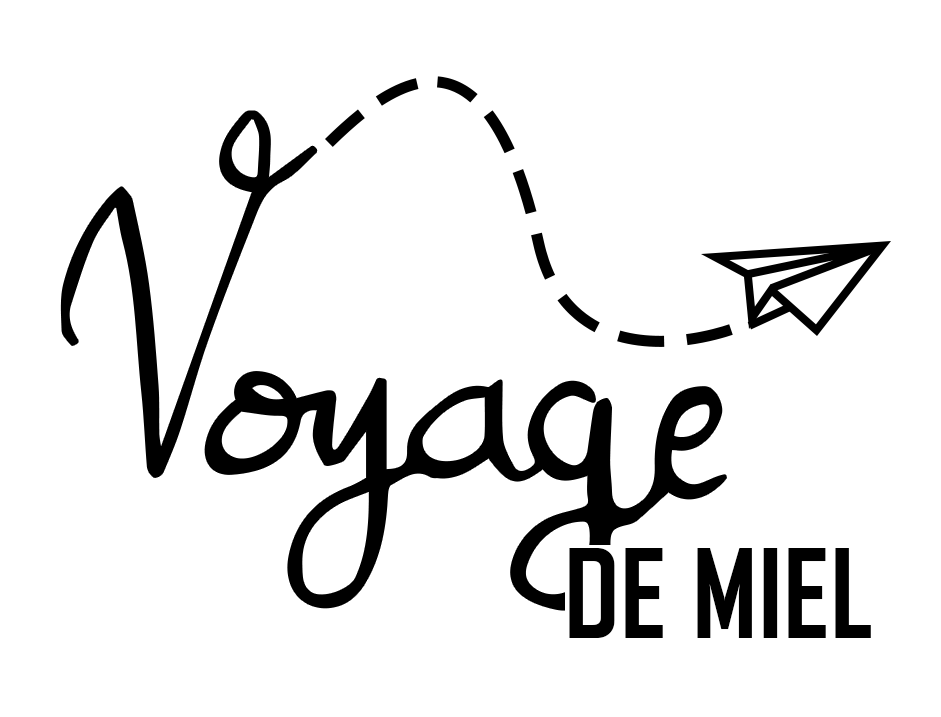
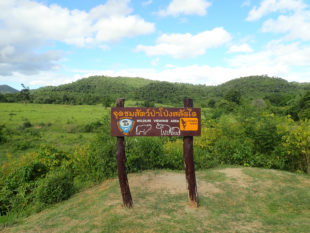
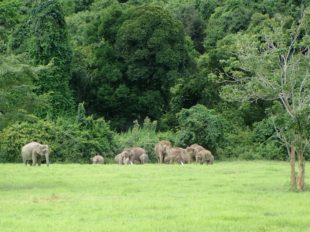
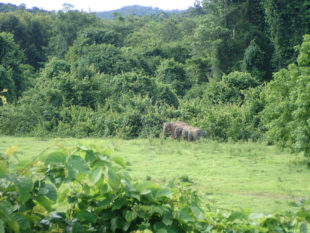
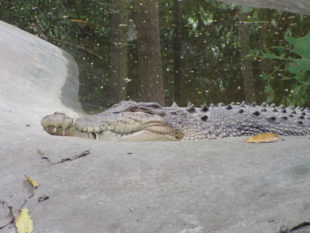
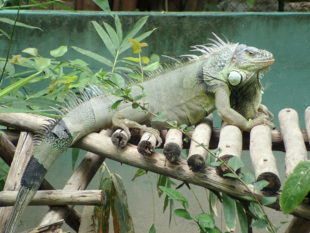
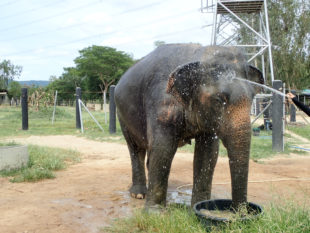
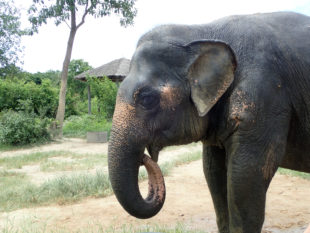
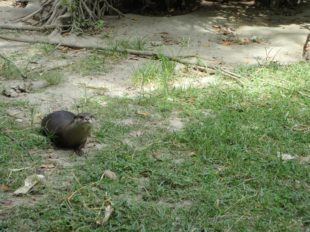
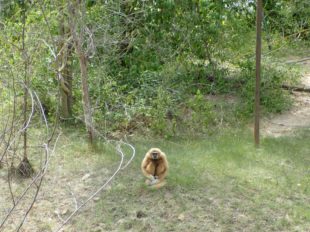
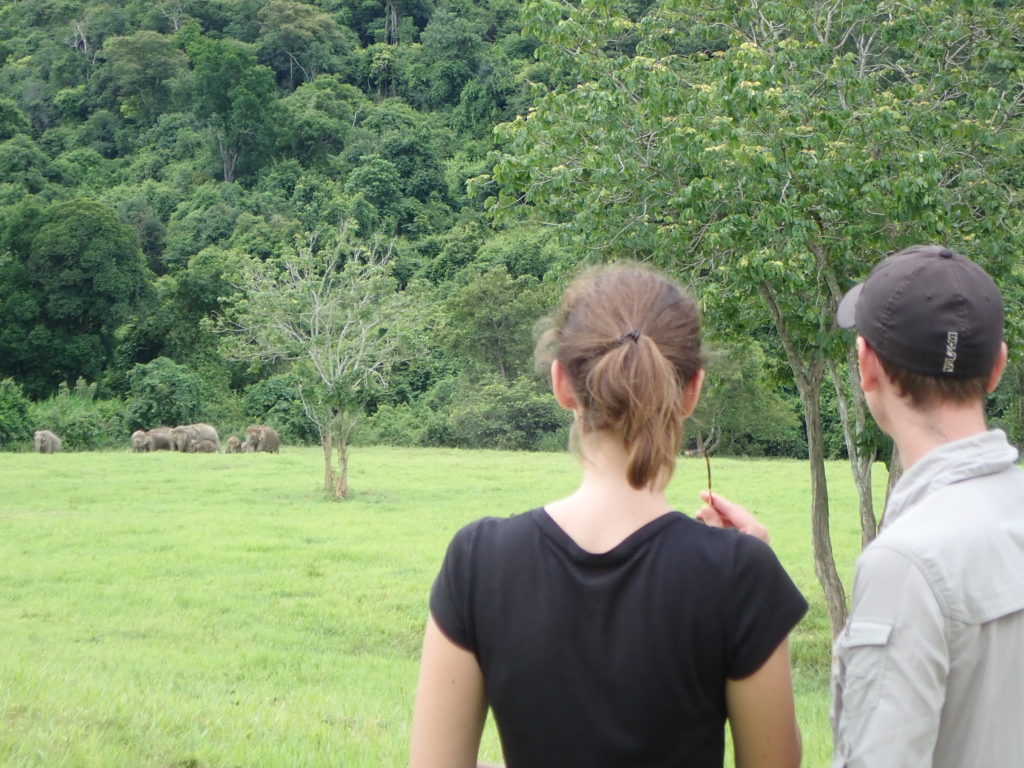
No Comments